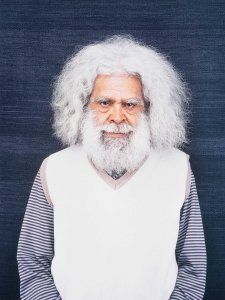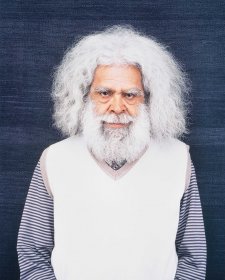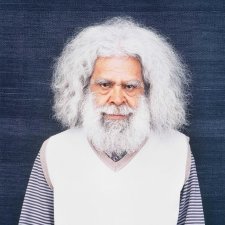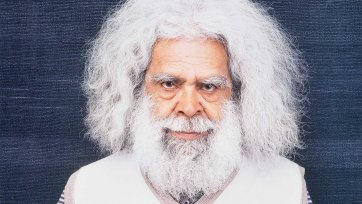Zane has lived on the land his entire life - he knows no other way. He now works the yards and the labyrinth of passage ways like a well-trodden path that he was destined for. The cattle move through the stockyards with great ease, it shouldn't be this easy but Zane just makes it happen. There is no fuss and, unlike other handlers, there is no yelling. Zane and the cattle move with an unspoken knowledge of what is supposed to be.
Questions
1. Why do you think the photographer chose to photograph his subject from this viewpoint?
2. How does the composition of the portrait influence your understanding of the subject?
3. Adrian Brown describes himself as a 'cinematographer'. What story is being told through his portrait of Zane?
The photographer and the portrait -
an interview
How do you define your own practice?
In the past I have used the term 'photojournalistic advertising photographer', however I am now also directing TV ads, so I think I will be using the term 'cinematographer'.
Do you have a website or are you represented on a website?
brownbox.com.au
What is your relationship to the subject?
For the time I am with them they are all that matters. I have no other thoughts or concerns other than how can I be a safe and caring part of their internal dialogue. I seem to have an instinct for what people might be thinking at any point in time and will interact accordingly.
Was the photograph a result of a constructed or candid encounter?
The image was candid in that Zane and I had chatted prior and I let him know that I was there to photograph him and others and their every day working life. As is the case with this shot, most of the time people get so used to me or forget I am there.
What are the ideas or themes underpinning your portrait?
I like the idea of showing how calm and respectful Indigenous cattlemen are. I also wanted to show that it was their job at this yard to move herds of cattle from pen to pen in what is in fact a maze of pens - yet they do it as easily as breathing.
Describe the technical aspects of your photograph.
Stockyards was captured on a Fuji rangefinder camera that shoots 220 film. Film speed was 400 ISO and only available light was used. There was no digital manipulation other than a subtle colour correction.
How was the final print made? Is it part of an edition?
Durst Lambda Print on Fuji Pearl paper. It is an edition of 5.
Describe your consideration of scale, mounting and framing in the presentation of your portrait.
I like to allow for plenty of breathing space around the image which is why I have 12cm borders on three sides and a 17cm border at the base. For me the image is a study of a person and a moment, so I like the idea of box framing and offsetting it within the frame as it feels a little more observational and scientific, but still remains an art piece.
Do you have any advice for young or emerging photographers (e.g. students)?
Start as soon as you can and find a happy balance between commercial and personal work. Allow yourself to move through many different ways of shooting but also allow yourself to gravitate to the style you find that you love the most.















